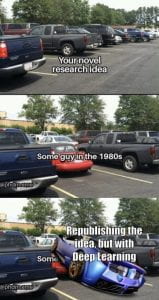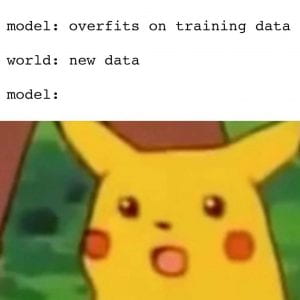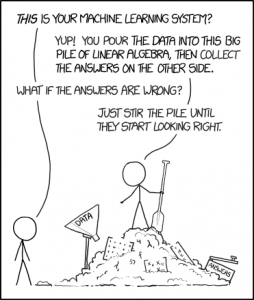Title: La leyenda de las víboras y la lumbre
General information about the item:
- Myth
- Language: Spanish
- Country of Origin: México
- Informant: B.G.
- Date Collected: 20 May 2020
Informant Data: B.G. was born on May 20, 1974 in Ixmiquilpan, Hidalgo, México. He is 3rd generation Otomí. He learned about his culture from his grandparents and parents.
Contextual Data: The piece of folklore that BG shared was a story his grandparents shared with him which they assured him was true. BG mentioned that as a child he and his family members would sit outside and listen to stories about Otomí culture that his grandparents would share. He states that the story has impacted him emotionally because first, he didn’t know whether to believe it or not, but he did choose to believe it because his grandparents said it was true. He felt he needed to share the story to pass along his culture. This particular story he shared was about magical snakes and fire which guides people to treasures buried in the ground. Note: B.G. was given information about the collection project and how the purpose was to collect folklore on indigenous plant and animal origin myths. Although this is not an origin myth, this is the myth B.G. chose to share about his Otomí culture.
Item:
“Hay otras historias, y eso sí se han transmitido, no se si tu sepas que los antepasados no gastaban el dinero, siempre lo tenían guardado o lo tenían enterrado. ¿sí ha escuchado eso? Y han pasado muchos casos allá en el pueblo que se han encontrado dinero y la gente no sabe cómo sacarlo. Y el dinero tiene– [B.G. hace mociones con sus manos para emfasis], ya ves que está enterado, tiene mucho como, sucre, o no sé lo que tiene, adentro, pero está todo ahí. ¿Imagínese cuánto tiempo está enterrado? Y a la hora de abrirlo todo el olor, ellos lo absorben. Entonces la gente que lo saca casi normalmente se enferma y se mueren. Ya me ha tocado mucho en mi pueblo, como una vez, era un niño yo creo, tendría como unos 14 o 15 años, los papás de él se encontraron dinero, pero ellos, los papás, no lo quisieron sacar. Entonces mandaron al niño que lo sacara– el dinero. Entonces a la hora de abrir, eran ollas de barros, a la hora de sacarlo y abrir la tapa, todo el olor se le, se le transmitió. Entonces el muchacho se enfermó y se murió. Quedó bien seco, seco, seco y al final se murió. Y todo el dinero se quedó con el papá y los hermanos y el pobre muchacho se murió. Y esto pasó en mi pueblo. Pero últimamente la gente ya sabe, entonces van y investigan primero y ya saben qué hacer. Entonces ya usan más, como equipos, como ropa para que no pueda entrar o cubre bocas con el oxígeno, y no sé qué tanto, para que no respires todo lo que se suelta. No sé si sepas, pero si ves una víbora y bien grande y como que te anda viendo y de repente así que la ves, como que te está dando una señal de que ahí está el dinero. O si ves que algo se está quemando y no es cierto, cómo lumbre, pero no se está quemando nada, o sea, eso significa que ahí hay dinero. Le voy a decir un caso. Mi esposa cuando tendría unos 8 o 9 años, ella miró. Y como nosotros somos del mismo pueblo, ahí del cerro, del monte. Entonces ella andaba así en el cerro y [ella] mira una víbora, pero bien grandota, y con diseños de monedas y se sorprendió. Pero ella no sabía de qué se trataba, y ya hasta que fue y llegó a su casa le platicó a su abuelita y a su mamá. Y ella le dijo, ¡‘qué, pues, te estaba diciendo que ahí había dinero!’ Y sí pasó tiempo y cuando se dieron cuenta, habían sacado un barril de allí de donde estaba ahí la víbora.” * Note this is transcribed exactly as it was spoken to me during the interview, including grammatical errors.
English Translation; the brackets signify edits made for clarity, i.e. [edited for clarity]:
“There are other stories, that [have] been [told], I do not know if you know that the ancestors did not spend [their] money, they always kept it, or buried it. Have you heard that? And many cases have happened where money has been found and people don’t know how to get it out. And the money has–, [motions with his hands], you see, it was buried, it has a lot of like, sucre [toxic particles], I don’t know what it called, inside, but it’s all there. Imagine how long [it has been] buried? And when it comes to opening it, all the smell, they [the people who discover the money] absorb it [the toxic particles]. So, the people who take it out almost always get sick and die. It has happened a lot in my town. Like once, there was a kid, I think he was about 14 or 15 years old, and his parents found money, but they, the parents, did not want to take it out. So, they sent the boy to take it out, – the money. So, when it was time to take out the money, [it was kept in] clay barrels when it was time to take it out and open the lid, all the odor was passed on to [him]. So, the boy got sick and died. He became very dry, dry, dry and in the end, he died. And all the money stayed with the parents and the brothers and the poor boy died. And this happened in my town. But lately, people already know, so they go and investigate first and they already know what to do [if they believe money is buried]. So, they use more protective equipment, such as protective clothing [where] it [the toxic particles] cannot enter or masks with oxygen and I don’t know what else, so that you do not breathe anything [toxic] which is released. I do not know if you know, but if you see a viper and it is very big and it looks like it is looking at you and suddenly you see it; it is giving you a sign that the money is there. Or if you see that something is burning and it is not true, like a fire, but nothing is burning, that means that there is money [there]. I’m going to tell you a case. My wife, when she was about 8 or 9 years old, she saw it [as in she saw a magical snake]. We are from the same town, there from the hill, from the mountains [in Ixmiquilpan Hidalgo México]. So, she was walking on the hill and she sees a viper, a very big viper with coin designs, and she was surprised. But she did not know what this meant until she arrived at her house and she talked to her grandmother and her mother. And her grandmother told her, ‘What the snake was telling you was that there was money there!’ And some time passed and by the time they realized it, [someone] had taken a barrel from [the spot] where the viper was. ”
Notes about the item:
Notes on the item: B.G. referred to the mysterious toxic particles which were released upon opening the buried money barrels as “sucre”. Sucre, in Spanish, translates “coin, penny or cent”, but what BG was referring to was the toxic particles that are found in buried and confined places that get released through decomposition. He did not know what these particles were called and called them sucre. This may be an error because sucre directly translates money, but he was referring to were the toxins released when a buried item is uncovered.
Additionally, our project was to collect origin myths related to the Otomí culture, but B.G. relayed this piece of folklore instead. Not wanting to disrespect him, I still collected the myth. B.G. said he didn’t know a lot about the Otomí culture, except for what his parents and grandparents told him as a child and what he himself has experienced, and could only say as much since he is 3rd generation Otomí. But, and I quote, “I assure you this is true”. B.G. has a lot of respect for his culture and made sure to let me know he was proud of his indigenous heritage. B.G. also spoke to me in Otomí and taught me some phrases, such as, “Jamadi”, which means thank you. The interview was conducted in Spanish, as this was the language B.G. was most comfortable speaking in, and I then translated the text to English making edits for clarity using square brackets. However, his Spanish was not perfect and contained various grammatical errors which I corrected when translating to English.
Collector’s name: Rosa Mendoza
Tags/keywords:







